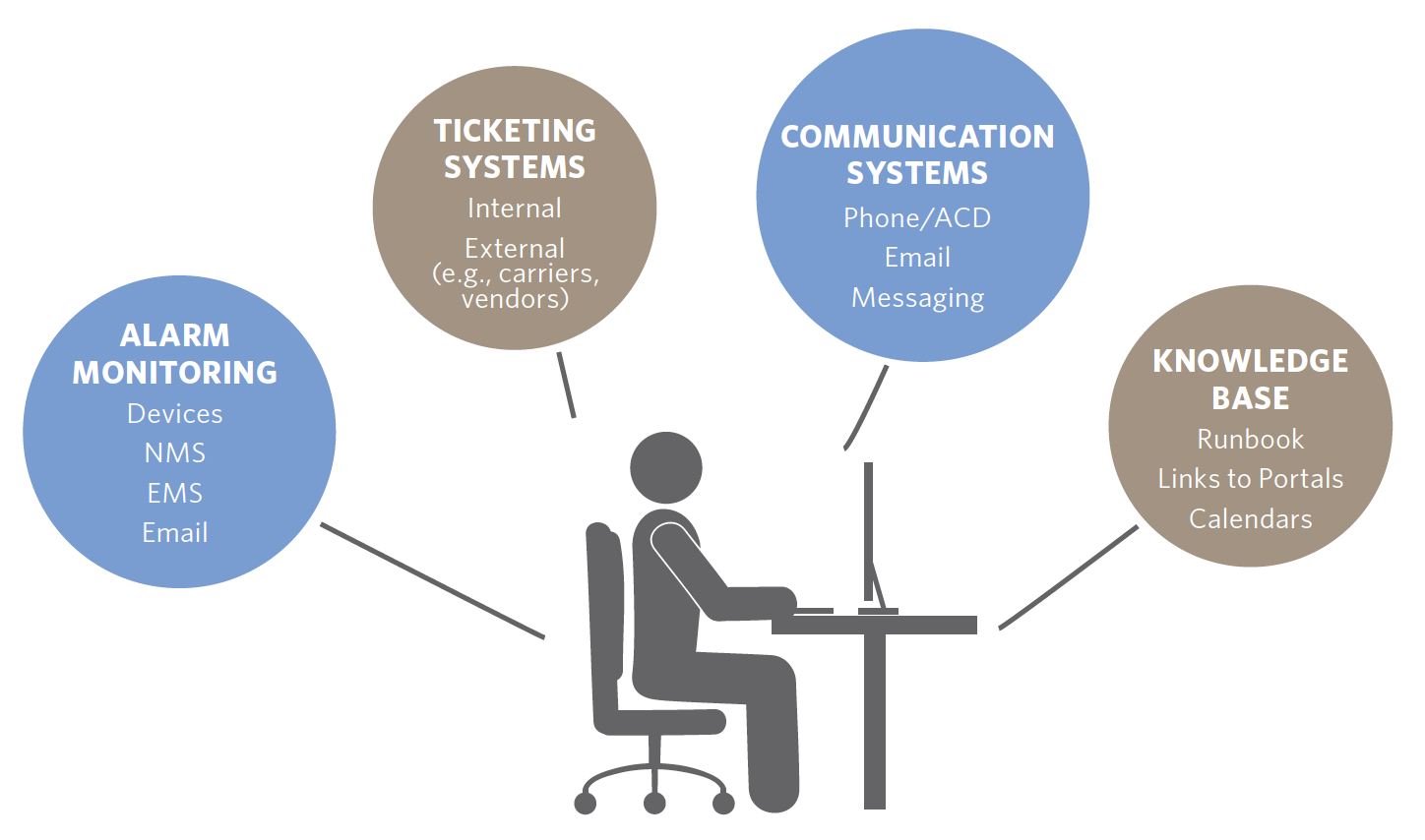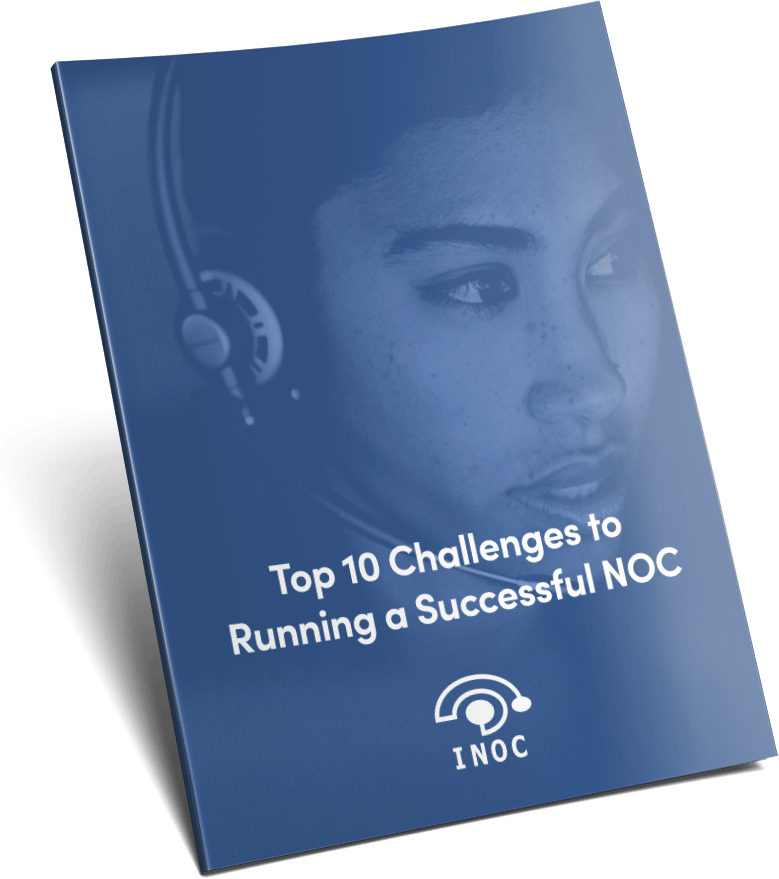
Especially among enterprises and communication service providers, the NOC has to be able to receive and process alarm or event information from multiple sources and present it in a single, consolidated view for staff to act on—a “single pane of glass.” In addition, there is a need to bring voice, email, text, customer portals, knowledge bases, documentation and workflow management tools into the NOC, each potentially with its own platform.
Without integration between these tools and platforms, NOC personnel are faced with tracking and managing multiple screens for event information; manually collecting information from multiple sources for the purposes of documentation, notification, and escalation; and then attempting to manage workflow toward service restoration. This makes it nearly impossible to monitor and report on SLA metrics, let alone optimize performance. The results inevitably include operational inefficiencies, missed SLAs, and undue stress on staff.
Here's a simple summary of just some of the various tools that are required for a NOC to function and that should be integrated into a single NOC platform.
Here's a brief description of each:
Platform integration needs to consolidate alarm or event data from various sources. These can include:
Direct devices and services monitoring
Vendor element management systems
Network management systems
Custom application management tools
Fiber and facilities/building management systems
Environmental monitoring (heat, power, intrusion, water, etc.)
Ticketing systems are used for documentation and workflow management and need to be tied into the single NOC platform. In addition, customers may use their own ticketing systems, which also need to be integrated into the NOC platform for documentation and efficient workflow between parties.
For efficient communications, phone, email, and messaging systems need to be linked into the NOC platform.
The NOC runbook containing work instructions for successfully managing an event to completion is a fundamental requirement for good NOC support. A detailed runbook also provides access to contact lists and calendars for notification, escalation and dispatch, network, site, and building diagrams, troubleshooting procedures, equipment manuals, customer and third-party databases, and more. Integrating knowledge-base access into the NOC platform allows the support team to quickly navigate and find the relevant information needed to resolve an issue.
Effective integration requires a good understanding of process and workflow management, the ability to map out the processes with relationships identified, and the ability to create appropriate linkages between the tools and platforms.
Done right, an integrated platform provides a single, consolidated view for NOC personnel. The result is an efficient workflow, effective troubleshooting, and fewer errors—all of which means greater quality control and performance optimization.
We integrate seamlessly with all your support systems, both technical and procedural, to fill gaps, enhance current capabilities, and offer entirely new ones. Whether you need simple support augmentation to escalate activities to your engineers or a NOC team that can take a more active role in working and resolving issues, we integrate with virtually any tool, process, or system to help you meet the growing demands for service among end-users and customers.
Each technical integration we plan and implement starts by identifying the tangible business outcome it will produce. Only then do we set out to build the technical integration that enables us to get there.
Seamless support collaboration within your own IT environment means you can keep all the functionality you rely on while augmenting and enhancing it operationally. Sharpen and expand your NOC support capabilities without changing the way you do business or the environment you’re comfortable working in.

Download our free white paper and learn how to overcome the top challenges in running a successful NOC.
